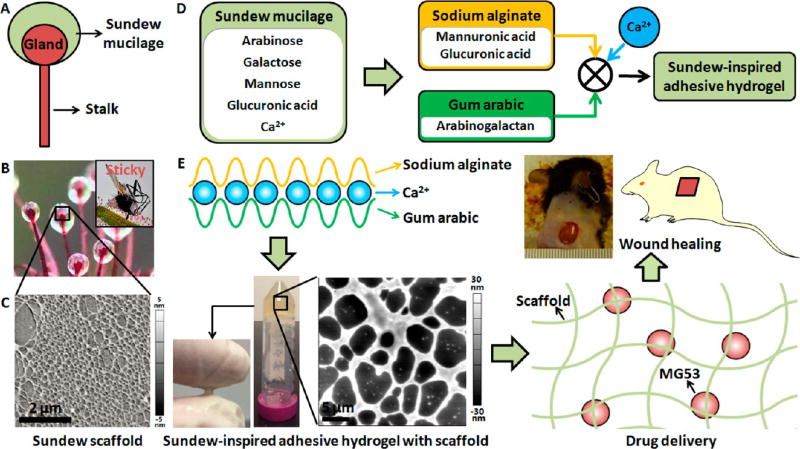Figure 1.
Sundew-inspired adhesive hydrogel for controlled drug delivery in chronic wound healing. (A,B) Schematic diagram (A) and actual image (B) of the Sundew mucilage. Inset in (B) shows a prey trapped by the Sundew mucilage. (C) AFM topographic micrograph of the Sundew mucilage. (D) Sodium alginate, gum arabic, and Ca2+ are used to fabricate the Sundew-inspired adhesive hydrogel. (E) Hydrogels are formed by Ca2+-dependent cross-linking between sodium alginate and gum arabic. After dropping the fabricated Sundew-inspired hydrogel onto a finger, the adhesion characteristics of the hydrogel were sensed by touching and pulling the hydrogel with another finger. AFM topographic micrograph shows network porous scaffold structures of the fabricated Sundew-inspired hydrogel. The Sundew-inspired hydrogel was used for drug delivery and chronic wound healing to explore its potential biomedical applications.

